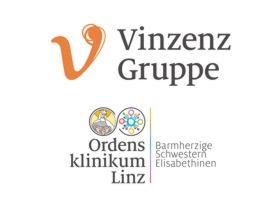Iodine-123-vascular endothelial growth factor-165 (123I-VEGF165). Biodistribution, safety and radiation dosimetry in patients with pancreatic carcinomaTools Li, S, Peck-Radosavljevic, M, Kienast, O, Preitfellner, J, Havlik, E, Schima, W, Traub-Weidinger, T, Graf, S, Beheshti, M, Schmid, M, Angelberger, P und Dudczak, R (2004) Iodine-123-vascular endothelial growth factor-165 (123I-VEGF165). Biodistribution, safety and radiation dosimetry in patients with pancreatic carcinoma. The quarterly journal of nuclear medicine and molecular imaging : official publication of the Italian Association of Nuclear Medicine (AIMN) [and] the International Association of Radiopharmacology (IAR), [and] Section of the Society of..., 48 (3). pp. 198-206. ISSN 1824-4785 2 - 2004 QJNMMI Li.pdf Restricted to Nur registrierte Benutzer Download (131kB) KurzfassungAIM
Imaging with radiolabelled vascular endothelial growth factor (VEGF) has been developed for the localisation and diagnosis of a variety of human solid tumors including gastrointestinal tumors.
METHODS
In this study we investigated the biodistribution, safety and absorbed dose of iodine-123 radiolabelled VEGF(165) ((123)I-VEGF(165)) in 9 patients with pancreatic carcinoma. Following intravenous administration of (123)I-VEGF(165) (189+/-17 MBq; <130 pmole (<5 microg) VEGF(165) per patient), sequential images were recorded during the initial 30 min PI. Serial whole-body images were acquired in anterior and posterior views at various time points. All patients underwent single-photon emission tomography (SPET) imaging. Dosimetry calculations were performed on the basis of gamma camera data. Estimates of radiation absorbed dose were calculated using the MIRDOSE 3 program.
RESULTS
The highest absorbed organ doses were found to be thyroid (0.058+/-0.004 mGy/MBq), spleen (0.046+/- 0.017 mGy/MBq), urinary bladder (0.04+/-0.02 mGy/MBq), lungs (0.034+/-0.009 mGy/MBq) and kidneys (0.033+/-0.005 mGy/MBq). The effective dose was estimated to be 0.017+/-0.002 mSv/MBq. A majority of primary pancreatic tumors and their metastases were visualized by (123)I-VEGF(165) scan.
CONCLUSION
In vitro binding results confirmed specific binding of (123)I-VEGF(165) to pancreatic tumor cells and tissues. (123)I-VEGF(165) shows favorable dosimetry and is a safe radiopharmaceutical that may be of potential value for the imaging of VEGF receptor status in vivo.
Actions (login required) |
||||||||||||||
|


 Tools
Tools Tools
Tools